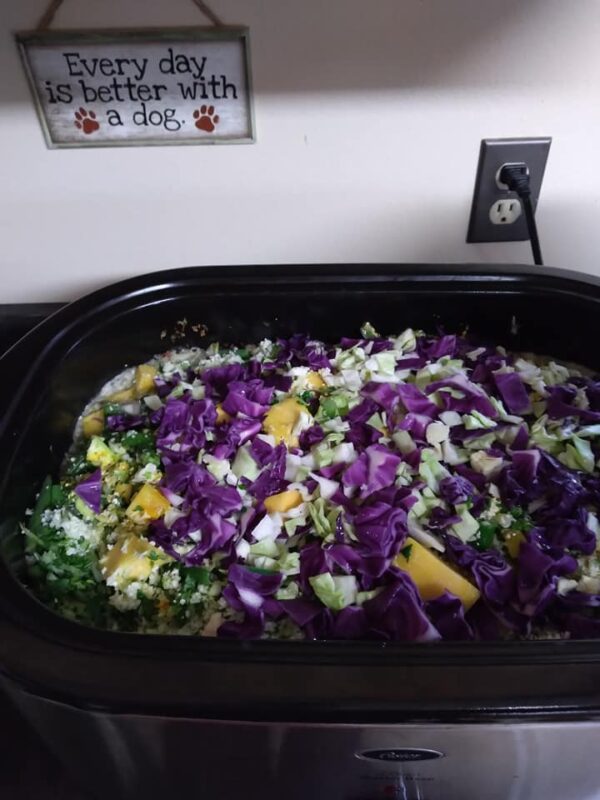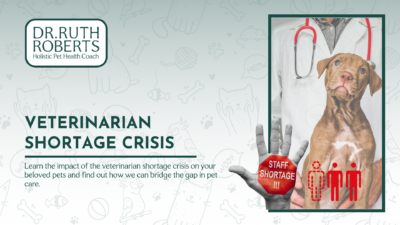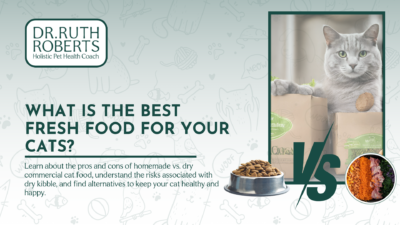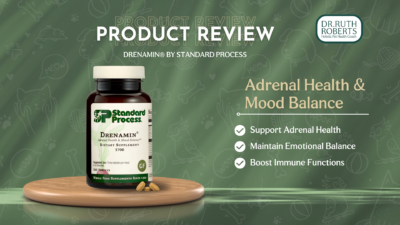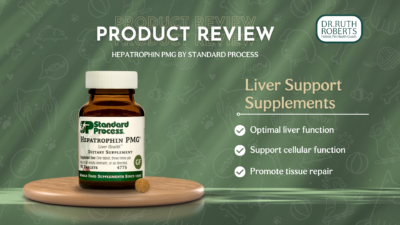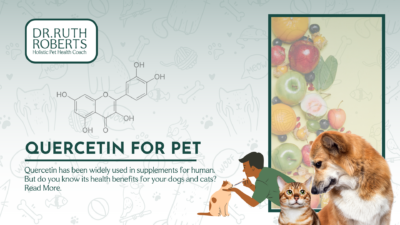What are the benefits of vegetables for dogs?
There is a myriad of them, but importantly, and mostly they revolve around the fiber content of vegetables.
- Provide the necessary phytonutrients found in the vegetables that help support general health
- Strengthen Their Immune System and help prevent cancer.
- They help improve liver function because of the increase in fiber
- Improve your pet’s gut health.
- It helps to keep your pets feeling full and control weight for less active dogs.
- Most importantly, it helps to prevent a blood sugar spike. All that fiber slows down digestion and absorption. So your pets and blood sugar stays more even throughout the day, which is super important if you’re starting to struggle with something like diabetes.
Wolves and Dogs – still much alike
Over the millions of years that dogs have evolved from their wild wolf ancestors, their outward appearance may have changed, but their digestive system and the way food is utilized for growth, maintenance, and reproduction are still 99% the same. Therefore a study of foods eaten by wolves provides us with a good guideline for how we should be feeding our domestic dogs. A wolf diet would include, for example, small to large prey animals, reptiles, insects, and fish as well as fruit.
Not only did the wolf eat a large variety of foods, but it also consumed almost the entire carcass, which meant they ate everything from all possible bones, to the skin and organs. In smaller prey, the entire digestive system would likely be consumed and would contain pre-digested fruits and vegetables. As such, mimicking this raw food diet in our domestic dog means vegetable matter can form part of the dietary mix. Given a dog falls somewhere in between being a carnivore and omnivore, fruits and vegetables, in appropriate amounts, can provide a range of benefits to your dog’s diet.
Learn more about the science of the original crockpet diet here.
Dehydration contributes to problems such as kidney disease or the formation of bladder stones. So the benefits of vegetables for dogs can help provide them with fluids. Vegetables are an excellent source of water. Cucumbers, lettuce, broccoli, and Brussels sprouts are more than 85% water.
Also, raw vegetables provide your dog with many vitamins, including:
- B vitamins. Help with energy, enzyme and nervous system function, immune response, and metabolism. Vegetables have many of the B vitamins but are low in B12 and B1, so your dog needs foods like liver and eggs.
- Vitamin C and co-factors. Dogs make their vitamin C but they need the co-factors to help their body use it. Your dog may also need a vitamin C boost as he ages or if he’s stressed.
- Vitamin A. Enhances immunity protects eye health, prevents skin disorders, and helps grow strong teeth and bones.
- Vitamin E. This antioxidant helps prevent cancer and other diseases. It also promotes healthy skin and hair.
- Vitamin K. Plays a role in bone formation and repair and helps improve liver function.
Can I give my dog vegetables every day?

Absolutely. When I created The Original Crockpet Diet (TOCPD), the biggest part of the recipe was veggies, both brassica veggies, and regular veggies or sort of the other.
Also, all dogs and puppies should have access to fresh, raw vegetables every day. Even though certain brands of dog food already contain fruits and vegetables, most vital nutrients are lost when food is cooked at high temperatures. Dogs digest foods differently than humans do, and eating the wrong foods can lead dogs to long-term health problems and, in extreme cases, even death. Dogs are omnivores that is why they have no real need for fruits or vegetables as part of their diet, but an occasional fruit or veggie as a treat is OK.
Is it good for dogs to eat vegetables? Why is preparing vegetables for your dogs so important?

Dogs can benefit from vegetables in their diet. While vegetables aren’t necessary for a dog’s health, it doesn’t mean you can’t, in most cases they can’t hurt, experts say. Some vegetables can be added to your dog’s food. You can also offer them as treats; corn and potatoes give them carbohydrates for energy, plus minerals and fiber. But dogs don’t need vegetables to get these nutrients.
What vegetables are good for dogs?
As I mentioned, brassicas are things like kale, broccoli, and cabbages. The other ones that are commonly fed are things like carrots, zucchini, squash, spinach, peas, and things of that nature. It is a wonderful thing because it is good for dogs to eat vegetables.
If you’ve heard Rodney Habib speak, he started, he’s sort of like the big wig in pet nutrition right now and he’s a raw advocate. But the thing that’s interesting to me is he started with a Ted Talk some years ago, probably 10 or 12, talking about that in breeds predisposed to bladder cancer, schnauzers, and the like, if you simply added a small number of vegetables to their dry food every day, their chances of developing bladder cancer dramatically drop. What veggies are good for dogs? There are tons and tons of them like I just mentioned. Pretty much everything, but I think what’s important is that they are prepared veggies.
There are 10 best vegetables for dogs that are also dog-friendly vegetables namely:
- Kale. Its benefits include vitamins like K, A, and Iron that provide bone health, proper vision and immune function, fetal development, and energy metabolism.
- Spinach. Spinach contains potassium, magnesium, and vitamins B6, B9, and E. It also contains high amounts of carotenoids, vitamin C, vitamin K, folic acid, iron, and calcium.
- Carrots. It contains vitamin A beta-carotene), biotin, vitamin K, potassium, and vitamin B6.
- Green Beans. Green beans are full of important vitamins and minerals, such as iron, calcium, and vitamins B6, A, C, and K. Green beans are also low-calorie and rich in fiber, which can help dogs feel full.
- Broccoli contains a huge variety of vitamins, including vitamin K, vitamin C, and potassium, which improve bone density, battle diseases, and improve heart health in dogs.
- Beets provide vitamin C, fiber, folate, manganese, and potassium. These nutrients help your dog’s digestion and immune system and support healthy skin and coat.
- Celery. It offers many vitamins including A and C, which are antioxidants that will help keep your dog young and healthy.
- Cucumber. It has a lot of phytonutrients and antioxidants, which offer your dog anti-inflammatory benefits.
- Yams /Sweet Potatoes. These are great for digestive health because they’re high in fiber. They contain vitamin B6, vitamin C, and manganese, plus they are rich in the antioxidant beta-carotene.
- Butternut Squash contains lots of vitamins and minerals like A, C, B6, and more which help your dog’s immune system, vision, and cardiovascular function.
How to prepare vegetables for dogs?

So preparing vegetables for dogs is super important because they lack the enzyme cellulase, which is an enzyme that breaks down the cell walls of the vegetable. In terms of preparing vegetables for your dogs, I think cooking is better because it essentially pre-digested those cell walls, those plants so that your pet can absorb those nutrients a lot more efficiently. Many of the raw advocates will say, I would just put it in a blender and make it smaller, and that does help improve the digestibility and the absorbability of the nutrients, but not tremendously.
Preparing the vegetables in such a way that your dog cannot choke is just as crucial as the vegetables themselves. The vegetables will be pureed for maximum benefit. As long as your dog doesn’t have digestive issues, vegetables make a fantastic snack or an addition to dog food. Here are some simple preparation techniques:
- Blanching
Blanching, or immediately immersing vegetables in boiling water and then very cold water, is a terrific way to prepare vegetables. Blanching vegetables removes dirt from the surface while retaining vitamins and flavor. It’s also a healthy option for people because it doesn’t require any cooking oil.
How to blanch: Blanching (scalding vegetables in boiling water or steam for a short time) is a must for almost all vegetables to be frozen. It stops enzyme actions which can cause loss of flavor, color, and texture. Blanching cleanses the surface of dirt and organisms, brightens the color, and helps retard the loss of vitamins. It also wilts or softens vegetables and makes them easier to pack.
- Steaming
It is a great way to prepare vegetables without having to submerge them in boiling water. Steaming cooks the vegetables thoroughly while retaining their vibrant color and flavor, as well as most of their nutritional value.
How to steam: Cut the vegetables into uniform sizes so that they cook at roughly the same rate and are all done at the same time. You can mix vegetables, but be aware that more tender vegetables, like broccoli, will cook faster than denser vegetables, like carrots. If you want to steam mixed vegetables at the same time, add the longer-cooking veggies first and then the quicker-cooking veggies after a few minutes. You can also cut the denser vegetables slightly smaller so that they cook more quickly and finish at the same time as the rest of the vegetables.
- Pureeing
Vegetables can be pureed to a raw puree for optimal advantages and digestibility. Some vegetables, such as celery and spinach, can be blended without being cooked. To make mixing easier, blanche or simmer root vegetables like carrots and sweet potatoes. The plant material’s cell walls are broken down during the pureeing process, making it easier for canines to digest.
- Freezing
Cooking large batches of vegetables and freezing them is a terrific method to save time and work. Put the veggies on an ice cube tray after pureeing, and grab one when you’re in a hurry! Simple and nutritious.
Even though veggies are good for your dog, limit their intake to less than 25% of his total diet. For example, none of our dishes include more than 15% fat. Too many veggies can cause problems, such as altering gut flora or increasing alkalinity, which can lead to renal problems. Moderation and balance are essential for a healthy diet.
What vegetable is bad for dogs?
Mostly. There are ones that if you give too much, it’s a problem. For instance, onions and garlic are commonly thought to be toxic to dogs and that’s true in large quantities, but the vast majority of dogs and cats won’t eat enough onions and garlic raw to create a problem. However, things like macadamia nuts and Brazil nuts are a big problem. They create toxicity at any dose; meaning any amount eaten so you do need to be mindful of that. But thankfully, the vast majority of fruits and vegetables are safe for both dogs and cats.
For vegetables and additionally fruits that are bad for dogs,
- Avocado is first on the list. While avocado may be a healthy snack for us humans, it should not be given to dogs at all. The pit, skin, and leaves of avocados contain persin, a toxin that often causes vomiting and diarrhea in dogs. The fleshy inside of the fruit doesn’t have as much persin as the rest of the plant, but it is still too much for dogs to handle.
- Blueberries are a superfood rich in antioxidants, which prevent cell damage in humans and canines alike. They’re packed with fiber and phytochemicals as well.
- Cherry plants contain cyanide and are toxic to dogs. Cyanide disrupts cellular oxygen transport, which means that your dog’s blood cells can’t get enough oxygen. If your dog eats cherries, be on the lookout for dilated pupils, difficulty breathing, and red gums, as these may be signs of cyanide poisoning.
- Grapes and raisins (dried grapes) have proved to be very toxic for dogs no matter the dog’s breed, sex, or age. Grapes are so toxic that they can lead to acute sudden kidney failure. Always be mindful of this dangerous fruit for dogs.
- Tomatoes’ green parts contain a toxic substance called solanine. While a dog would need to eat a large amount of the tomato plant to make him or her sick, it’s better to skip tomatoes altogether just to be safe.
- Asparagus isn’t necessarily unsafe for dogs, there’s just really no point in giving it to them. It’s too tough to be eaten raw, and by the time you cook it down so it’s soft enough for dogs to eat, asparagus loses the nutrients it contains. If you want to share a veggie, something more beneficial is probably best.
- Wild mushrooms can be toxic for dogs. While only 50-100 of the 50,000 mushroom species worldwide are known to be toxic, the poisonous ones can hurt your dog or even lead to death. Washed white mushrooms from the supermarket could be OK, but it’s better to be safe than sorry.
I’m Dr. Ruth Roberts, your pet’s ally.

